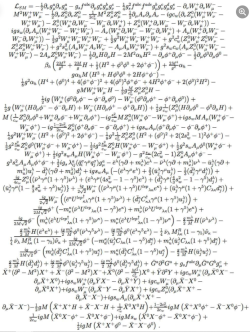Install the app
How to install the app on iOS
Follow along with the video below to see how to install our site as a web app on your home screen.
Note: This feature may not be available in some browsers.
You are using an out of date browser. It may not display this or other websites correctly.
You should upgrade or use an alternative browser.
You should upgrade or use an alternative browser.
Science Knowledge Quiz
- Thread starter TheRangerDude
- Start date
- Joined
- Aug 18, 2020
- Posts
- 350
- Reaction score
- 535
- Bookie:
- $ 1,000.00
That would actually be the acceleration due to gravity and the units are ft/s^2. That means that for every second something falls, regardless of its mass, it gains a velocity of 32.2 ft/s. The force (or weight) is the mass multiplied by that acceleration due to gravity. I think you'd need to have that mass in units of slugs but BGS units are nasty and I never work with those.Force of gravity is 32.2 ft/s
Funny thing, I was just studying about unit weights of aggregate for concrete. They talked about mass vs weight
v=√2ghHere's a very easy physics question. Don't bother searching because I'm making it up on the fly.
You drop a iron ball with a mass 1 kg from a 27 meter high roof. What is the total energy of the ball at the top of the roof? What is total energy of the ball when just before it hits the ground at h=0? What is the velocity of the ball at that instant, just before it strikes the ground?
The only two equations you really need to solve this are:
PE = mgh, take g = 9.8m/s^2
KE = 0.5mv^2
There's really only one other key to solving but I'll leave that for ya'll to find.
11/11. Forgot about the forest one for a second but it obviously wasn't the other three.
- Joined
- Aug 18, 2020
- Posts
- 350
- Reaction score
- 535
- Bookie:
- $ 1,000.00
v=√2gh
Good, now how'd ya get there?
Good, now how'd ya get there?
basic math after understanding that KE = PE of a dropped object.
0.5mv^2 = mgh solve for v
Or just remember the equation from physics 20+ years ago
- Joined
- Aug 18, 2020
- Posts
- 350
- Reaction score
- 535
- Bookie:
- $ 1,000.00
basic math after understanding that KE = PE of a dropped object.
0.5mv^2 = mgh solve for v
Or just remember the equation from physics 20+ years ago
Not quite, that will give ya the right answer but the reasoning is a little off. KE != PE for a dropped object generally speaking. Recall that where you are solving for velocity, the height is zero. So, the PE at that point is zero while KE is at its maximum. The key to the question is conservation of energy. So, the total energy of the ball (KE+PE) is the same throughout its descent. As the ball gains velocity/KE, it loses height/PE.
Knowing that, you use boundry conditions. The instant the ball is dropped it has no velocity at the total height h. That means KE is zero and your total energy is just the PE (PE is maximum). Alternatively, by the time the ball reaches the ground, at h=0, all the PE has been converted into KE, so PE = 0 and the total energy is just the KE. So, it's really the total energy at the top of the roof is equal to the total energy at the ground or, PE(roof) = KE(ground).
Not quite, that will give ya the right answer but the reasoning is a little off. KE != PE for a dropped object generally speaking. Recall that where you are solving for velocity, the height is zero. So, the PE at that point is zero while KE is at its maximum. The key to the question is conservation of energy. So, the total energy of the ball (KE+PE) is the same throughout its descent. As the ball gains velocity/KE, it loses height/PE.
Knowing that, you use boundry conditions. The instant the ball is dropped it has no velocity at the total height h. That means KE is zero and your total energy is just the PE (PE is maximum). Alternatively, by the time the ball reaches the ground, at h=0, all the PE has been converted into KE, so PE = 0 and the total energy is just the KE. So, it's really the total energy at the top of the roof is equal to the total energy at the ground or, PE(roof) = KE(ground).
PE at the top = KE at the bottom
didn't think I'd have to explain the different points
- Joined
- Aug 17, 2020
- Posts
- 21,033
- Reaction score
- 59,590
- Bookie:
- $ 1,000.00
Gesundheit.





